 Petzlover
Petzlover Both Jaguarundi Curl and Machbagral are originated from United States. Both Jaguarundi Curl and Machbagral are having almost same weight. Jaguarundi Curl may live 5 years more than Machbagral. Both Jaguarundi Curl and Machbagral has same litter size. Both Jaguarundi Curl and Machbagral requires Low Maintenance.
Both Jaguarundi Curl and Machbagral are originated from United States. Both Jaguarundi Curl and Machbagral are having almost same weight. Jaguarundi Curl may live 5 years more than Machbagral. Both Jaguarundi Curl and Machbagral has same litter size. Both Jaguarundi Curl and Machbagral requires Low Maintenance.
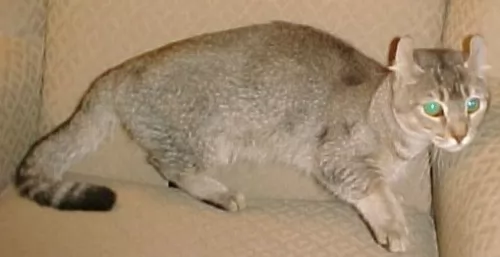 Found mostly in Central and South America, the Jaguarundi Curl has been bred to look like a wild cat. - the Jaguarundi.
Found mostly in Central and South America, the Jaguarundi Curl has been bred to look like a wild cat. - the Jaguarundi.
It was in the 1940s that the cat was also found in Florida. It is a result of a crossing between the Hyland Lynx with Munchkins and possibly other short-legged domestic cats.
The Munchkin cat is a medium-sized cat and it also has very short legs – the result of a genetic mutation.
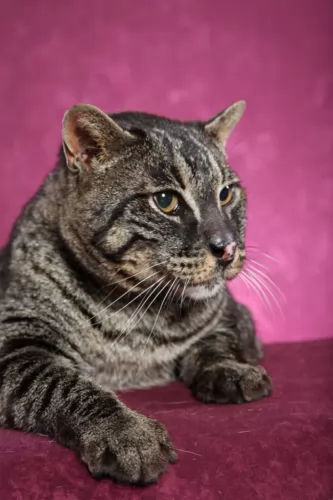 This is an experimental cat breed – a wildcat hybrid. It seems as though this cat was also developed in the United States like many of the other hybrid cats.
This is an experimental cat breed – a wildcat hybrid. It seems as though this cat was also developed in the United States like many of the other hybrid cats.
Also known as Bagral, Tthe Machbagral came about by crossing the wild Fishing cat – also known as the Asian Fishing cat and a Bengal cat or melanistic tabby spotted domestic cat.
Once again, humans wanted a cat that would look like a wild cat but that could be domesticated.
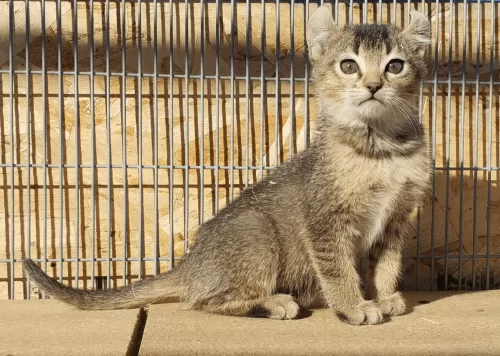 This is a medium-sized, strong, muscular wild cat with short legs, a large head and small ears that are curled and set wide apart.
This is a medium-sized, strong, muscular wild cat with short legs, a large head and small ears that are curled and set wide apart.
The eyes are wide-set and are large and expressive. The eyes can be gold, green or even blue.
The cat can weigh anything between 6 and 10kg. They can take up to years to reach their weight. The tail of the cat is long and thick, the body long and muscular.
The short coat is a ticked or a spotted pattern and can come in various colors. In most cats, the coats are tawny or solid like the Jaguarundi. In ideal specimens, coats will be tawny or solid like the Jaguarundi.
Maybe it’s the cat’s wild side but the Jaguarundi Curl cat is a shy, elusive and somewhat solitary cat. In the wild these cats only socialize to mate.
It is, however, a very vocal cat. The cat is also a good climber and swimmer and you will need to invest in climbing equipment.
If your Jaguarundi Curl has more Munchkin in him, you may find him far more sociable and actually seeking out the company of his human family.
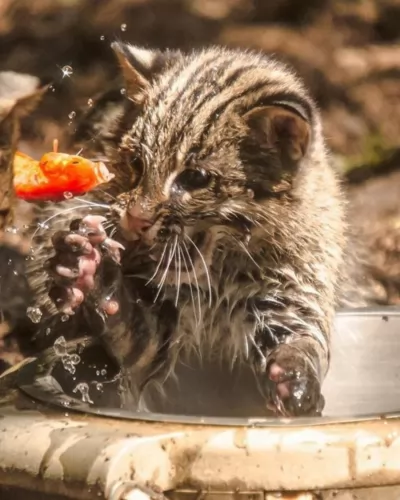 The Machbaral is a medium to large-sized cat and can weigh up to 7kg. It is described as a stocky cat. The head is large with fairly small ears. The fur of the Machbagral will be dense and medium length with a thick fluffy tail. The color is black with lighter tips.
The Machbaral is a medium to large-sized cat and can weigh up to 7kg. It is described as a stocky cat. The head is large with fairly small ears. The fur of the Machbagral will be dense and medium length with a thick fluffy tail. The color is black with lighter tips.
The Machbagral cat is very friendly and intelligent and like so many hybrid cats he loves playing in water. If you have an outside cage for him, it should have a small pool.
He is a cat that loves his human family and behaves much like a dog. You can teach this cat to walk on a leash.
You need to bear in mind that because of the wildness in the Machbagral, there will no doubt be some aggression. They can also be quite solitary by nature and may never adjust to being in a social setting. These cats are also not 100% predictable.
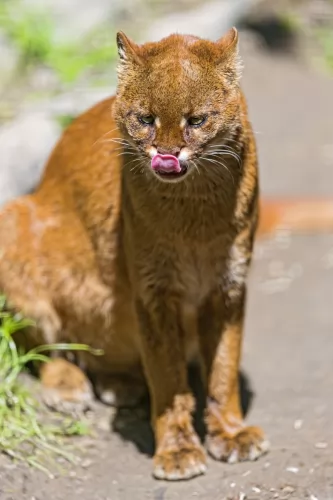 The wild Jaguarundi is smallish cat that is a little bit larger than a house cat.
The wild Jaguarundi is smallish cat that is a little bit larger than a house cat.
Some people like keeping these mixed-breed, hybrid cats, and they can make good pets, but they do tend to be reclusive. You have to remember that with these cats, part of their genetic makeup is a wild cat, and this just means that you can’t really be sure how they will turn out.
Think twice before you buy a cute little Jaguarunndi Curl kitten. Cat Rescue shelters are seeing a massive escalation in the number of hybrid cats who are just abandoned by their owners.
They wanted a ‘wild-type’ cat and ended up with behavior from the cat that they couldn’t handle. How cruel is that. Its the human's fault, not the cat.
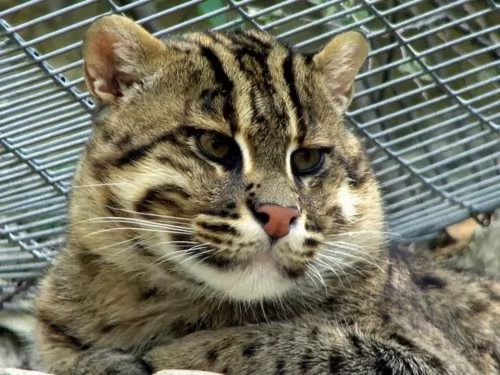 The Machbagral, just like some of the other hybrid cats there are, can be wonderful to own. But sadly these hybrids should be discouraged as pets.
The Machbagral, just like some of the other hybrid cats there are, can be wonderful to own. But sadly these hybrids should be discouraged as pets.
They can make wonderful pets no doubt, but there is always that unpredictable behavior with them.
There are so many cats in shelters today, many of them are hybrids because people had no idea that the wild side of the hybrid such as the Machbagral is always lurking there, ready to come out.
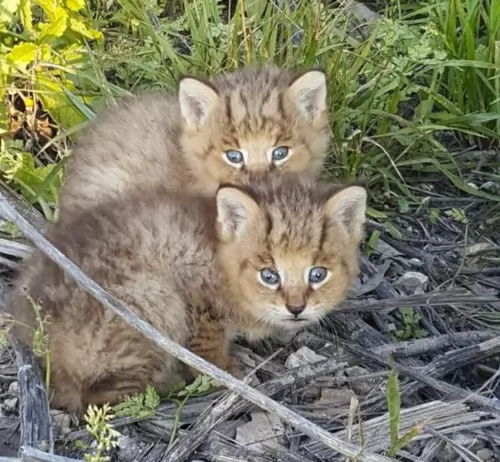 Hybrid cats do have some health issues because of their breeding. Cat owners who choose these cat breeds need to know that they have special needs.
Hybrid cats do have some health issues because of their breeding. Cat owners who choose these cat breeds need to know that they have special needs.
You should speak to your vet about the health of your cat. Domestic cats and wild cats have a different number of chromosomes. These cats wouldn’t normally mate so that when they are crossed during breeding, an abnormal genetic makeup is a result.
Reproductive problems in cats like the Jaguarundi Curl become a common occurrence and stillbirths can be the norm. Often you’ll find that some of the cats are infertile, whether male or female.
You've also got to be aware of vaccines as sometimes they don't work with these hybrid cats. Many times a cat like this is exposed to rabies and you'll find that the vaccine was ineffective.
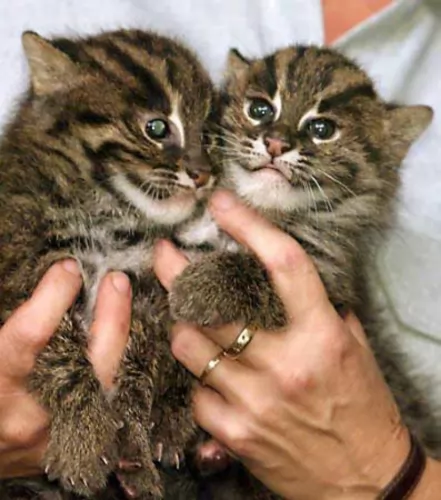 You need to know that interbreeding wild cats with domestic cats still has wildness in a cat.
You need to know that interbreeding wild cats with domestic cats still has wildness in a cat.
The truth is, there are behavioral complaints from owners of these hybrid cats.
No matter how wonderful the Machbagral seems to be as a pet, at some time or other he will display aggression and also failure to use a litter box.
These hybrids usually mark their territory by urination and spraying and often can’t learn to use a litter box. Unlike with a proper domestic cat, neutering or spaying a hybrid cat won’t really change their behavior of urinating inside your house.
Also, because hybrid cats such as the Machbagral are unnatural breeding, there can be health issues. One of the more common illnesses among hybrid cats include digestive issues, of which IBD is one. This is a bowel disease and it can cause chronic diarrhea with your cat.
Another medical issue is Hypertrophic Cardiomyopathy. Also, another concern is that while regular cat vaccines protect your regular cat from some deadly cat diseases, they may not be approved for use in hybrid cats, and if they are approved, they may not be effective.
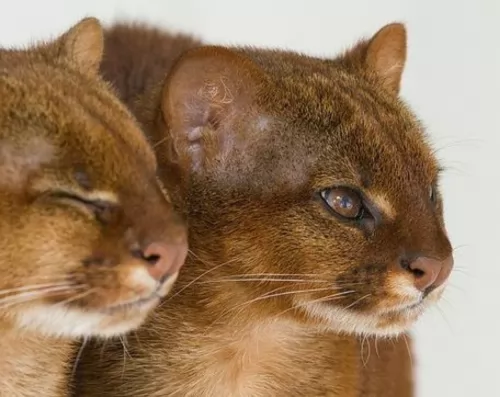 Be prepared for the new arrival of your cat. Have food and water bowls, warm bedding, toys, litter box, and food all available and waiting.
Be prepared for the new arrival of your cat. Have food and water bowls, warm bedding, toys, litter box, and food all available and waiting.
Your Jaguarundi Curl doesn’t require a specialized diet. You can feed him much the same as your other domestic cats.
The food needs to be high-quality and can be wet or dry food, so long as it makes sure that meat is the top ingredient. Your cat is a carnivore and will require meaty meals to remain healthy. Dietary supplements or vitamins can only do your Jaguarundi Curl good.
You can brush the coat once each week to remove loose hair and to keep the coat shiny.
You want to provide your cat with a litter box and keep it clean too. These hybrid cats don’t easily learn to use the litter box as they should, and they may do their business around your home as opposed to using the litter box.
Get your pet a collar and tag to identify your cat in case he gets away.
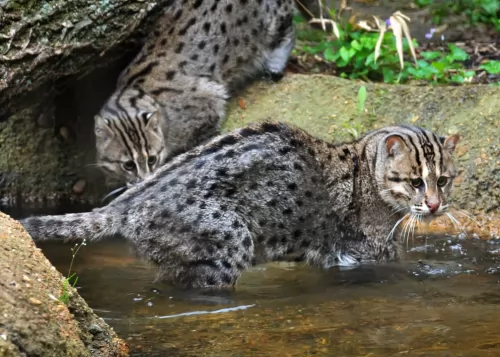 Most cat owners with basic cat care knowledge will be able to take care of their Machbagral. You could say that there is a little bit more specialized care with these hybrid cats as they will require an outside cage as they are cats with a wild side.
Most cat owners with basic cat care knowledge will be able to take care of their Machbagral. You could say that there is a little bit more specialized care with these hybrid cats as they will require an outside cage as they are cats with a wild side.
Feline hybrids are larger than domestic cats and can exhibit a wild temperament, so you have to bear in mind they require careful and different handling to a regular cat.
A diet of commercial pet food may not be sufficient for a hybrid such as the Machbagral and your vet may well be able to advise you on the feeding requirments of these hybrids.
Since cats are carnivorous, they will need to be fed food that is high in protein. You need to understand how to read labels on commercially manufactured cat foods and to avoid those that have more carbohydrates in them and less meat. Feeding you cat such a diet will ensure health issues later on.
Provide your pet with all the things needed to make him content as can be. Food and water bowls, paddling pool, toys, sleeping area. You want to surely invest in collar and tag as these cats often try to get away.
You want to make sure you have an outdoor enclosure for your Machbagral. These hybrids are indoor- and outdoor cats. Because they often don’t learn to use a litter box they need to be outside in an enclosure for some of the time. They are certainly not indoor cats.